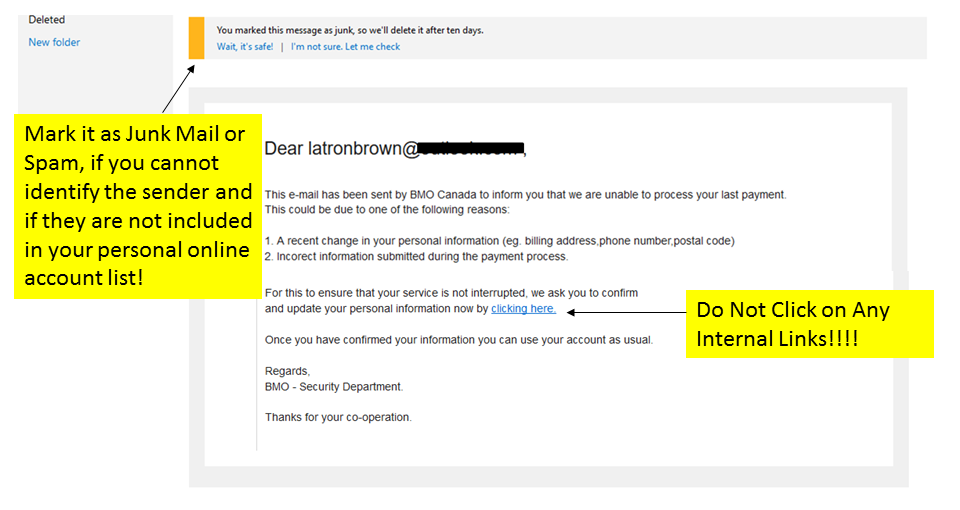
As the holidays quickly approach, I have noticed an increasing number of emails requesting that I take immediate action and update my account information. But here is the kicker, many of these emails are requesting personal information to about accounts that I have never opened! While I am used to getting emails like these, I still have to guard my reactions appropriately. Scammers are becoming more and more crafty in their approach to dig deep into your pockets.
Today, I opened my email and saw the subject line ” BMO Account Alert”. Almost immediately, I “felt” like I needed update account information! Who wants to have delinquent accounts!
I know how easy it is to feel the need to take action. These scammers are experts in making you feel fearful. They know that our natural reaction to problems is to fix them. So they tap into these fears and have defrauded hard working people out of hundred of thousands of dollars!
I wanted to put together a few quick tips to identify scam emails during the holidays and going forward! I’ve included an example of the email I received today, so you can follow along!
- Make a master list of all of your online financial accounts with phone numbers, login usernames and passwords. When purchasing online, use reputable and secure e-commerce sites. Anytime you use your credit card to make online purchases, I recommend writing it down in your calendar or in a notebook that you keep hidden in a safe place.
- When you receive an email asking you to update account information, credit card numbers, billing address, etc, do not click on any links that say “click here”, “update your contact information here”, or anything of the sort prompting you to click on a link. The link will usually be underlined and blue.
- The first thing you will more than likely notice is the Subject line. Immediately locate the name of the person sending the email to begin your own due diligence by verification and cross referencing.

- If the sender’s name is recognizable AND it is matched to your master list, I recommend calling the company using the contact number that you have already written down. Do not call any numbers located within the email, as it is just another method to collect information. You can speak with a representative to confirm if the company sent the email, and you can have them update any information at the moment.
- If you do not recognize the name of the sender, cannot match it to your master list, contains a link to updated information, immediately mark it at spam or junk mail! Do not respond!

I hope these examples give you and idea of what to look for as you are online! Let us know if you have recognized any other scams!



